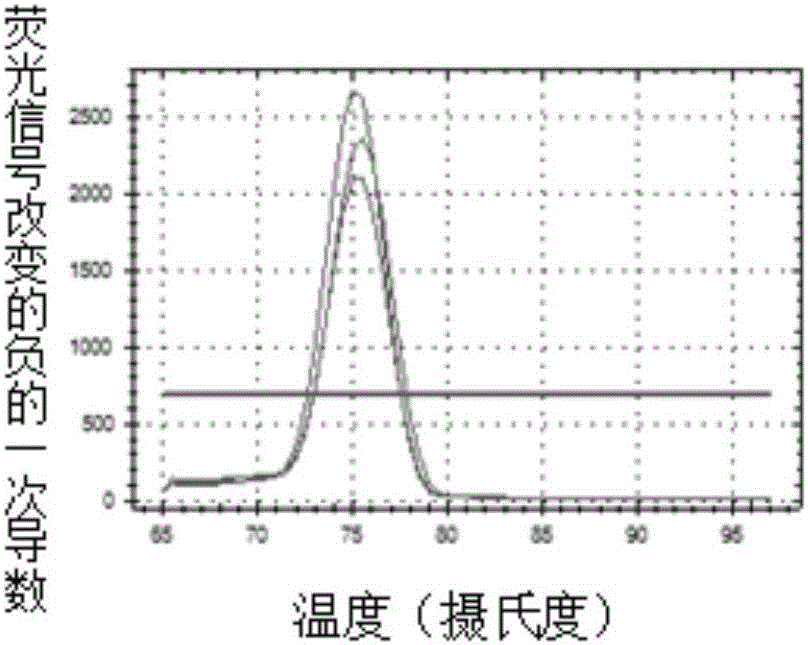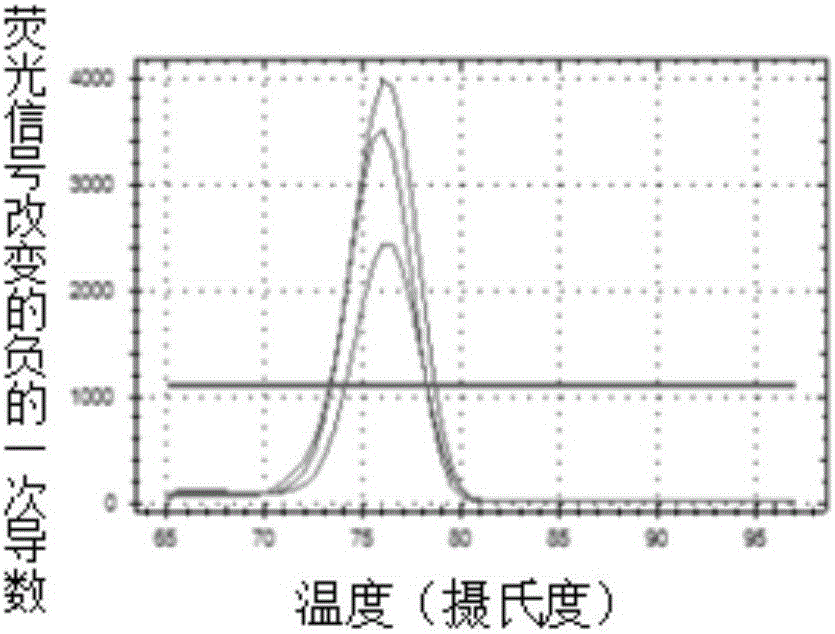Method for detecting mouse original components by specific primer
A mouse-derived component and specific technology, applied in biochemical equipment and methods, microbial measurement/inspection, DNA/RNA fragments, etc., can solve the problems of personal injury and physical harm of users, and avoid secondary pollution , easy operation, less time-consuming effect
- Summary
- Abstract
- Description
- Claims
- Application Information
AI Technical Summary
Problems solved by technology
Method used
Image
Examples
Embodiment 1
[0024] The process of the method for detecting mouse-derived components with specific primers involved in this embodiment is divided into five steps: specific primer synthesis, DNA extraction, reaction system establishment, PCR amplification, and mouse-derived component analysis results evaluation:
[0025] (1), design and synthesis of specific primers: design and synthesize specific primers according to the mitochondrial cytochrome b gene sequence of mice in Genbank, the base sequence of the upstream primer F of the specific primers is 5'-GCCTTATAATTAATTGGAGGTA-3', specific The base sequence of the downstream primer R of the primer is 5'-AGCTATATTATGTGCTTGAT-3';
[0026] (2), DNA extraction: get 1 g of mouse muscle tissue and grind it into mince, then operate according to the instructions of the tissue genome DNA extraction kit, extract DNA, and measure the concentration of the extracted DNA through a nucleic acid protein analyzer to be 220ng / μL, and the purity is 1.85, with ...
Embodiment 2
[0034] The process of the method for detecting mouse-derived components with specific primers involved in this embodiment is divided into five steps: specific primer synthesis, DNA extraction, reaction system establishment, PCR amplification, and mouse-derived component analysis results evaluation:
[0035] (1), design and synthesis of specific primers: design and synthesize specific primers according to the mitochondrial cytochrome b gene sequence of mice in Genbank, the base sequence of the upstream primer F of the specific primers is 5'-GCCTTATAATTAATTGGAGGTA-3', specific The base sequence of the downstream primer R of the primer is 5'-AGCTATATTATGTGCTTGAT-3';
[0036] (2), DNA extraction: get mouse muscle tissue (different from the mouse source of embodiment 1) 1g and grind into minced shape, then operate according to the instructions of the tissue genome DNA extraction kit, extract DNA, measure the extracted DNA through a nucleic acid protein analyzer The concentration of...
PUM
 Login to View More
Login to View More Abstract
Description
Claims
Application Information
 Login to View More
Login to View More - R&D
- Intellectual Property
- Life Sciences
- Materials
- Tech Scout
- Unparalleled Data Quality
- Higher Quality Content
- 60% Fewer Hallucinations
Browse by: Latest US Patents, China's latest patents, Technical Efficacy Thesaurus, Application Domain, Technology Topic, Popular Technical Reports.
© 2025 PatSnap. All rights reserved.Legal|Privacy policy|Modern Slavery Act Transparency Statement|Sitemap|About US| Contact US: help@patsnap.com


